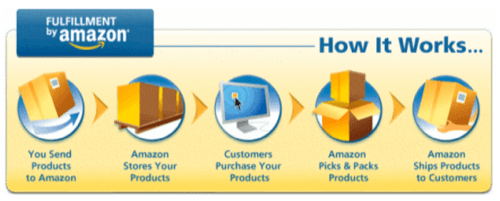Amazon wants to do for physical product shipping what it’s done for web storage and computing power – leverage its surplus infrastructure built up by Amazon.com to offer cheap and easy infrastructure for all kinds of other activities.

Last night Amazon announced the newest addition to the Amazon Web Services suite: Amazon Fulfillment Web Service (AFWS).
AFWS offers two APIs (application programming interfaces) – one inbound and one outbound. That means developers can now progromatically send physical goods to an Amazon warehouse (fulfillment center) and then have Amazon do the shipping of those goods out to customers when items are purchased through 3rd party sites.
Amazon has offered other businesses access to its fulfillment infrastructure for some time through the Fulfillment by Amazon service, but today’s announcement means that the whole process will be automated. It’s a webservices world!
Accessing the APIs will be free of course, but Amazon Fulfillment itself charges for physical storage and shipping (prices here). Web services users can create shipments of inventory to Amazon fulfillment centers, submit fulfillment order/shipment requests, track and manage shipment requests and upload branding information for packing slips on boxes. According to Wikipedia at least, there are ten Amazon fulfillment centers in the US, ten in Europe and four in Asia.

As we discussed in our recent post on APIs and Developer Platforms: The Pros and Cons, an API is like an invitation to start a structured business development relationship on the fly, without lengthy technical or political negotiations. The Fulfillment API is what brings the Amazon Fulfillment Services to life.
Amazon Web Services have enabled a whole new class of web startups to offer storage and processing features far beyond what they could have in-house. At least in terms of bandwidth use, those webservices are now bigger than Amazon.com proper – itself one of the most visited sites on the internet.
We’ll see if Amazon Fulfillment can do the same to small shops selling physical goods. The centralization of the infrastructure could be very interesting. Perhaps Walmart will buy Amazon someday for its webservices. I look forward to reading what Nick Carr has to say about this.










